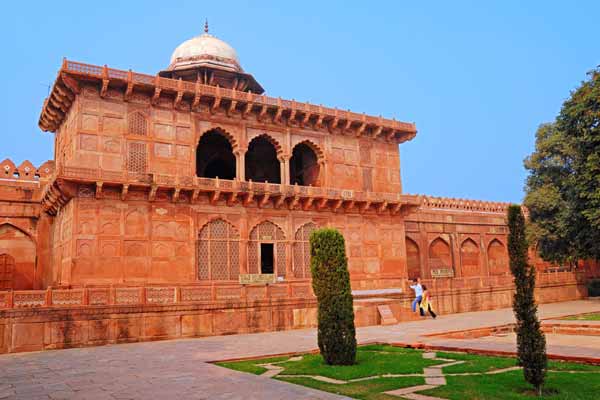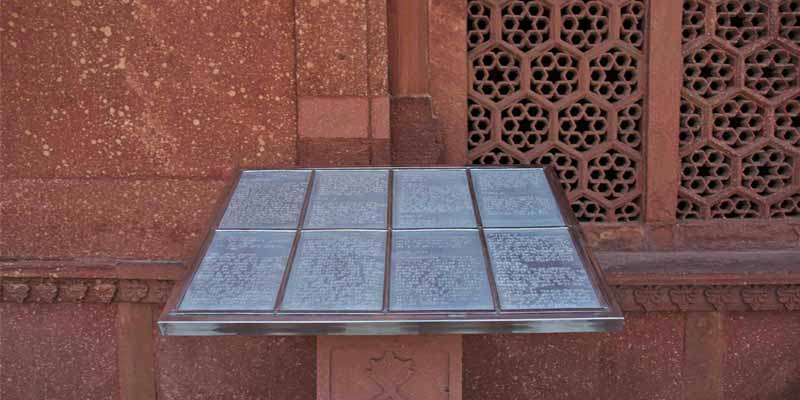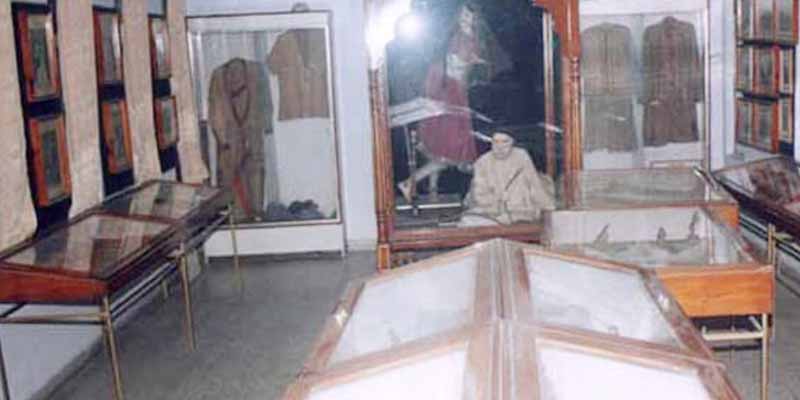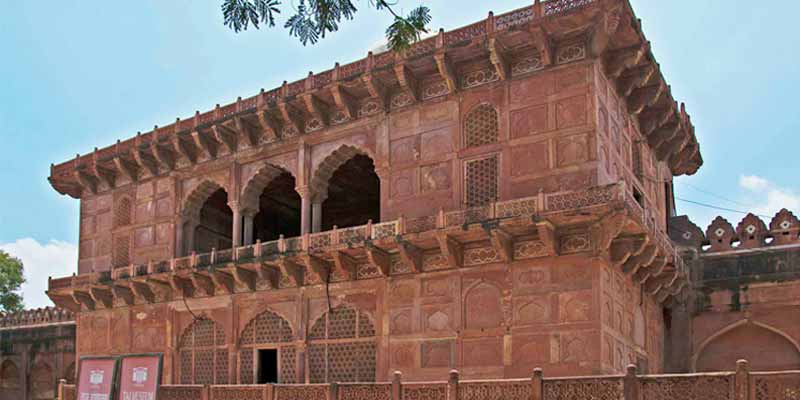Taj Museum Agra, India, is a captivating repository that complements the grandeur of the iconic Taj Mahal. Nestled within the Taj Mahal complex, the museum offers visitors a profound insight into the historical, cultural, and architectural aspects surrounding this magnificent monument.
Spread over a generous expanse, the Taj Museum showcases an impressive collection of artifacts and exhibits that unravel the story of the Taj Mahal’s creation and the era it hails from. The museum’s design mirrors the elegance of the Taj Mahal itself, featuring intricate architectural elements and serene gardens that create a harmonious ambiance Agra Tourism.
Among the museum’s prized possessions are architectural blueprints, historical documents, and rare photographs that detail the construction and design process of the Taj Mahal. These artifacts shed light on the artistic prowess and engineering marvels of the Mughal era. Additionally, visitors can marvel at exquisite miniature replicas of the Taj Mahal, providing a closer look at the intricate craftsmanship that adorns the Agra Monuments.

The museum doesn’t merely focus on the architectural marvel, but also delves into the life and times of the Mughal Emperor Shah Jahan and his beloved wife Mumtaz Mahal, in whose memory the Taj Mahal was built. Portraits, personal belongings, and anecdotes from their lives provide a human touch to the monument’s rich history.
Visiting the Taj Museum Agra is a journey that transports visitors through time, allowing them to immerse themselves in the opulence and romance of the Mughal era. It serves as a testament to the enduring legacy of the Taj Mahal and its significance as a symbol of love and architectural brilliance. As visitors step out of the museum, they carry with them a deeper appreciation for the beauty and historical importance of the Taj Mahal, making their overall experience of this world wonder even more profound.
Interesting facts to know about the Taj Museum:
- The museum is home to 121 artefacts, including manuscripts, calligraphy, and miniature paintings from the Mughal era.
- Illustrations from the well-known Persian epic Shahnama of Firdausi, a Chahal Majlis manuscript, are also featured in the exhibition.
- In addition, there are paintings, marble pillars, weaponry, tools, plans, and drawings of the Taj complex in the collection.
- Visitors can view artworks of Shah Jahan and his beloved wife Mumtaz Mahal in the main hall.

History of Taj Museum
The history of the Taj Museum is closely intertwined with the history of the Taj Mahal itself, as it was established to further illuminate the story and significance of this iconic monument. The museum was conceived and developed to provide visitors with a deeper understanding of the historical, cultural, and architectural contexts surrounding the Agra Tour Packages.
The idea of creating a museum within the Taj Mahal complex was born out of a desire to showcase the intricate details, craftsmanship, and historical significance of the monument. It was designed to be an educational and informative space that could enhance the overall visitor experience while also preserving and displaying valuable artifacts related to the Taj Mahal.
The Taj Museum officially opened its doors to the public as an integral part of the Taj Mahal complex. Its establishment was a result of collaborative efforts between various entities, including archaeological and historical organizations, to curate a collection of artifacts that would complement the monument’s grandeur. The museum’s design and architecture were carefully planned to harmonize with the aesthetic sensibilities of the Taj Mahal itself.
Over the years, the Taj Museum Agra has evolved to encompass a diverse array of exhibits and artifacts. These include historical documents, architectural drawings, photographs, and personal belongings of the Mughal royalty, especially Emperor Shah Jahan and his wife Mumtaz Mahal. These items help visitors connect with the past and gain insights into the lives of the people behind the creation of the Taj Mahal.
The museum’s exhibits offer a chronological narrative of the Taj Mahal’s inception, construction, and the cultural milieu of the Mughal era. Visitors can delve into the architectural intricacies, the emotional significance of the monument, and the broader historical context that shaped its creation.
By offering this comprehensive narrative, the Taj Museum has contributed significantly to enhancing the overall visitor experience at the Taj Mahal. It has become a vital educational and cultural institution that not only preserves the heritage associated with the monument but also fosters a deeper appreciation for its artistic and historical value Agra Day Tours.

The architecture of the Taj Museum
The architecture of the Taj Museum Agra is a blend of Mughal and modern styles. The museum is housed in the Naubat Khana, a red sandstone building with white marble inlay work that was originally built as a guardhouse during the Mughal era. The building has two stories, with a central courtyard that provides access to the galleries and exhibits.
The ground floor of the museum houses a collection of artifacts related to the Taj Mahal, including photographs, paintings, and architectural drawings. The exhibits are arranged thematically, with each section providing a unique perspective on the history and cultural significance of the Taj Mahal. The galleries are spacious and well-lit, with high ceilings and arched doorways that create a sense of grandeur and elegance.
The first floor of the museum is dedicated to the history of Agra, the city where the Taj Mahal is located. The gallery features a collection of artifacts, photographs, and multimedia displays that highlight the cultural and historical significance of Agra, which was a center of Mughal power in India during the 16th and 17th centuries. The gallery is designed in a contemporary style, with interactive exhibits and modern lighting that create a dynamic and engaging experience for visitors.

Best Time to Visit the Taj Museum
The best time to visit the Taj Museum Agra is during the winter months from November to February, when the weather is pleasant and cool. The temperatures during this time range from 10°C to 20°C, making it ideal for outdoor activities and sightseeing.
During the winter months, the sky is clear and the air is free from dust and pollution, which means you’ll be able to enjoy clear views of the palace and the surrounding area. The winter months are also the peak tourist season in Agra, which means the palace can be quite crowded, especially during weekends and holidays.
If you prefer to avoid crowds, you can visit the palace during the shoulder seasons of March to April or September to October. During these months, the temperatures are still mild, and the crowds are smaller than in the winter months.
The summer months from May to August can be quite hot and humid in Agra, with temperatures reaching up to 45°C. It is not the best time to visit Taj Museum as the heat can be quite intense and uncomfortable. However, if you do visit during this time, make sure to carry sunscreen, a hat, and plenty of water.
How To Reach Taj Museum
Reaching the Taj Museum in Agra, India, is relatively straightforward due to its prominent location within the Taj Mahal complex. Here are the common modes of transportation to reach the Taj Museum:
By Air: The nearest major airport is the Indira Gandhi International Airport in New Delhi. From there, you can take a domestic flight to Agra’s Kheria Airport. Once you arrive in Agra, you can hire a taxi, auto-rickshaw, or use app-based ride-sharing services to reach the Taj Museum Agra.
By Train: Agra is well-connected by train to major cities across India. The Agra Cantonment (AGC) railway station is the most prominent railway station in the city. From the railway station, you can hire a taxi, auto-rickshaw, or use local transportation to reach the Taj Museum.
By Road: Agra is connected to various cities through a network of national highways. The city is easily accessible by road. You can use your own vehicle, hire a taxi, or use inter-city buses to reach Agra. Once in Agra, follow the signs to the Taj Mahal complex, where the Taj Museum is located.
Local Transportation: Once you’re in Agra and have reached the vicinity of the Taj Mahal complex, you can easily walk to the Taj Museum. The museum is situated within the Taj Mahal complex, so you’ll need to purchase an entry ticket to the complex to access the museum.
Guided Tours: Many guided tours of Agra include a visit to the Taj Mahal complex and the Taj Museum. These tours often provide transportation, entrance fees, and the expertise of a guide who can offer insights into the history and significance of the site.
App-Based Ride Services: Services like Uber and Ola operate in Agra. You can use these apps to book a ride to the Taj Museum, especially if you’re coming from the railway station or another part of the city.
It’s important to note that the Taj Mahal complex, including the Taj Museum Agra, can experience varying levels of visitor traffic, so it’s recommended to plan your visit during less crowded times, especially during early mornings.
Always check the most recent travel information and options before your trip, as transportation details can change over time.








